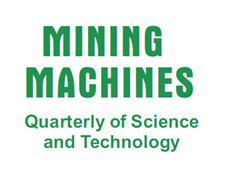Monika Gawlik-Jędrysiak, Andrzej Gamian
Monografia nr 34
Gliwice 2011, s.1-25, il., bibliogr. 73 poz.
ISBN 978-83-60708-50-7
cena egz. 25,00 zł
Uogólnione zakażenia bakteryjne u pacjentów hospitalizowanych na oddziałach intensywnej terapii, stają się coraz poważniejszym problemem medycznym. U ponad 16% spośród tych pacjentów rozpoznaje się ciężką sepsę, a ilość przypadków co roku wzrasta.
Sepsa nie jest wywoływana bezpośrednio przez mikroorganizmy patogenne, lecz jest skutkiem silnej, ogólnej odpowiedzi immunologicznej organizmu na obecność patogenu. W jej przebiegu uwalniane są liczne mediatory, interferon, interleukiny, histaminy i wiele innych. Następuje aktywacja komplementu, procesów koagulacji oraz uwalnianie kinin. Konsekwencją zachodzących procesów jest uszkodzenie śródbłonka i innych tkanek oraz całych narządów. W przypadku infekcji wywołanych bakteriami Gram-ujemnymi za aktywację układu immunologicznego organizmu odpowiada lipopolisacharyd (LPS). Poznanie zależności między budową lipopolisacharydu a jego toksycznością stanowiło przedmiot wielu badań i pozwoliło na opracowanie szeregu nowych koncepcji leczenia sepsy oraz szeroko pojętych chorób zakaźnych. W eksperymentalnych terapiach sepsy brane są pod uwagę czynniki wiążące i neutralizujące endotoksynę w organizmie.
The pathogenesis and treatment of sepsis
Systemic bacterial infections in patients of hospital intensive care units are growing medical problem. Sever sepsis is diagnosed in more than 16% of these patients, and a number of cases grows every year. Sepsis is caused by pathogenic microorganisms, as an effect of en- hanced immune systemic response to the presence of pathogen. In the course of sepsis several cellular mediators are released such as inter- feron, interleukins, histamine and others. Complement is activated as well as coagulation processes and realizing of kinins are initiated. Con- sequently, endothelium is damaged and other tissues what leads to whole organs dysfunction. In case of infections caused by Gram-ne- gative bacteria, their lipopolysaccharide (LPS) is responsible for the over activation of immune system of organism. Understanding of relationship of structure of lipopolysaccharide and its endotoxicity was the goal of extensive studies which resulted in elaboration of new approaches to treatment of sepsis and infectious diseases. In experimental therapies of sepsis are considered factors which recognize and neutralize the endotoxin in organism.





 Badanie bezpieczeństwa wyrobów
Badanie bezpieczeństwa wyrobów Klaster Maszyn Górniczych
Klaster Maszyn Górniczych